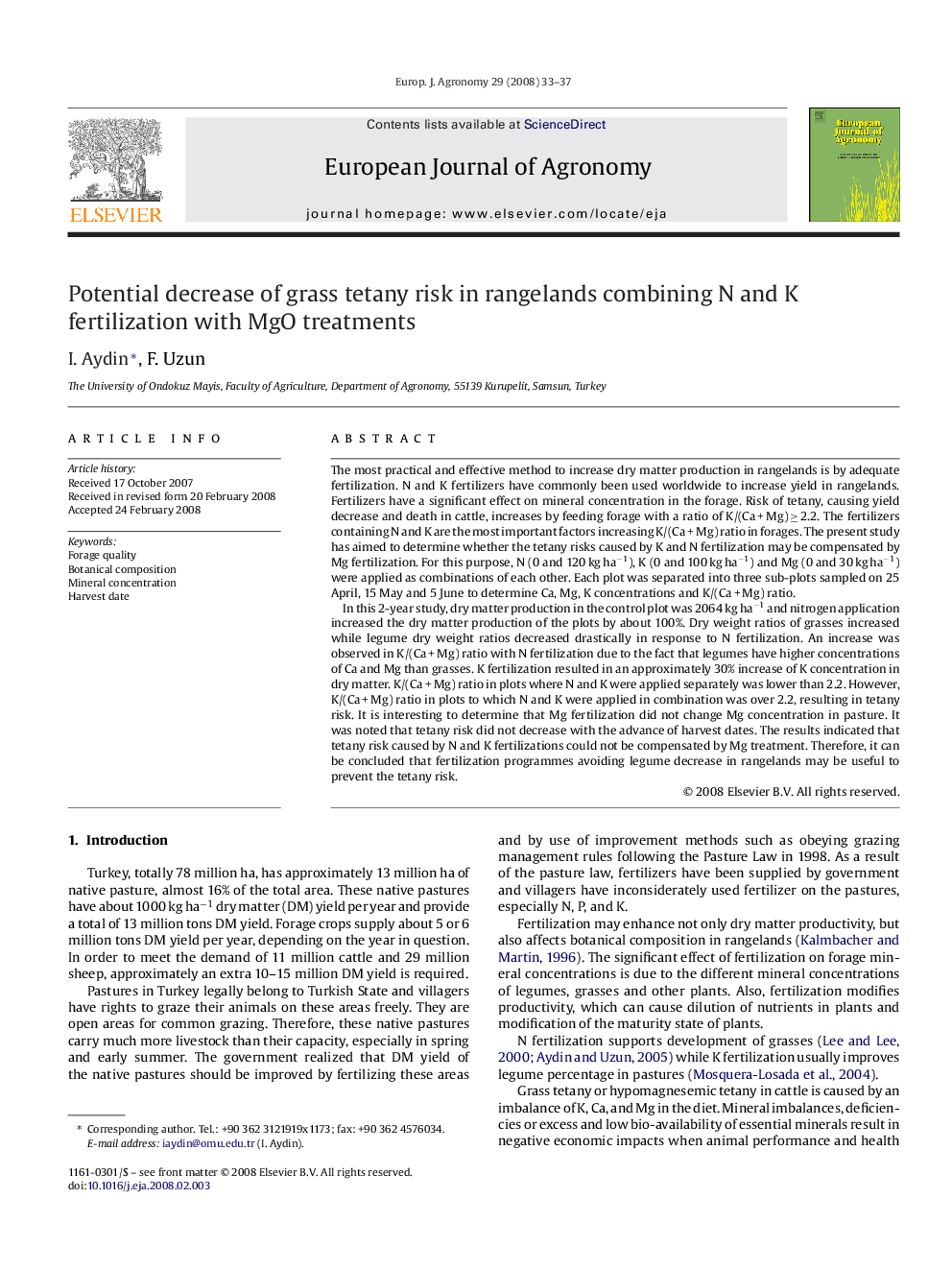| Article ID | Journal | Published Year | Pages | File Type |
|---|---|---|---|---|
| 4509556 | European Journal of Agronomy | 2008 | 5 Pages |
The most practical and effective method to increase dry matter production in rangelands is by adequate fertilization. N and K fertilizers have commonly been used worldwide to increase yield in rangelands. Fertilizers have a significant effect on mineral concentration in the forage. Risk of tetany, causing yield decrease and death in cattle, increases by feeding forage with a ratio of K/(Ca + Mg) ≥ 2.2. The fertilizers containing N and K are the most important factors increasing K/(Ca + Mg) ratio in forages. The present study has aimed to determine whether the tetany risks caused by K and N fertilization may be compensated by Mg fertilization. For this purpose, N (0 and 120 kg ha−1), K (0 and 100 kg ha−1) and Mg (0 and 30 kg ha−1) were applied as combinations of each other. Each plot was separated into three sub-plots sampled on 25 April, 15 May and 5 June to determine Ca, Mg, K concentrations and K/(Ca + Mg) ratio.In this 2-year study, dry matter production in the control plot was 2064 kg ha−1 and nitrogen application increased the dry matter production of the plots by about 100%. Dry weight ratios of grasses increased while legume dry weight ratios decreased drastically in response to N fertilization. An increase was observed in K/(Ca + Mg) ratio with N fertilization due to the fact that legumes have higher concentrations of Ca and Mg than grasses. K fertilization resulted in an approximately 30% increase of K concentration in dry matter. K/(Ca + Mg) ratio in plots where N and K were applied separately was lower than 2.2. However, K/(Ca + Mg) ratio in plots to which N and K were applied in combination was over 2.2, resulting in tetany risk. It is interesting to determine that Mg fertilization did not change Mg concentration in pasture. It was noted that tetany risk did not decrease with the advance of harvest dates. The results indicated that tetany risk caused by N and K fertilizations could not be compensated by Mg treatment. Therefore, it can be concluded that fertilization programmes avoiding legume decrease in rangelands may be useful to prevent the tetany risk.
